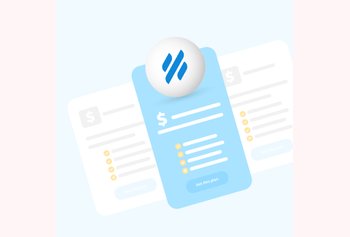Over the years, the term “helpdesk” has become somewhat synonymous with customer support. And I can imagine why: It is software that helps manage queries from customers.
But if you think about how a helpdesk works, it gives you the visual imagery of a real-world desk in a physical office, situated right at the front and run by a team that offers help to customers walking in. And when all customer interactions take place at this “desk,” it prevents the rest of the company from having direct access to customers.
So, if you have a team of agents shielding your organization from customer interactions and learnings, how do you make customer experience everyone’s responsibility?
It’s important to note that the key to delighting customers goes beyond what the support team does. In my opinion, the people who actually build a product or render a service should be able to interact with customers directly.
Particularly in professional services such as architecture and planning, financial services or real estate consultancy, this type of interaction — between the service provider and the customer — is critical to building relationships and driving loyalty. But helpdesk products that shield noncustomer facing employees from customers can make it extremely hard to build such relationships and deliver great experiences.
That’s not the only instance where helpdesks can let you down. I decided to dig deeper, and here are some ways in which helpdesks can get in the way of great CX.
1. Customer communication and learnings get siloed.
So, on one end, you have support teams with direct access to customer communications. And at the other end, you have teams across the company that are kept away from these interactions. The end result of all this is that helpdesks create silos of customer information. Employees who don’t work in support, therefore, can find it difficult to access customer interactions or help out the customer directly.
Imagine a scenario where a customer raises a request about a product feature not working. The support staff loops in an engineer who then wants to understand the context behind the problem and also talk to the customer about it. In this case, a helpdesk makes it really hard for the engineer to access previous interactions (needed to get full context) and directly communicate with the customer.
Consequently, there’s more back and forth, which leads to a delayed resolution and a mediocre experience. At the same time, the engineer also misses out on a valuable opportunity to interact with and learn directly from the customer.
2. Organization-wide commitment to CX doesn’t take off.
For customer experience initiatives to be successful, an organization-wide commitment to the cause is very essential. Every employee should be aligned toward creating a delightful experience for the customer.
That said, when customer information is siloed inside helpdesks, collaboration on customer requests gets complicated. This not only makes it difficult for support agents to loop in other teams to handle customer queries but impacts the quality of work across the company.
How can engineers design products or offer services without understanding changing customer expectations? How can product managers chart product road maps without being cognizant of the most common customer requests and issues?
Seamless collaboration keeps stakeholders up to date on evolving customer needs and helps them create actionable plans that are aligned with the company’s CX vision for their respective teams. But helpdesk products — which are designed to “contain” customer communication — naturally get in the way of such collaboration.
3. Customer service becomes impersonal.
In the current ultra-competitive business climate, personalized and human customer service can help you stand out. Customers are more likely to gravitate toward companies that make them feel special rather than engage with those that provide standard, run-of-the-mill experiences. The problem with using a helpdesk is that you can find it hard to personalize experiences, owing to its innate functionalities.
How many times has your helpdesk sent this automated message to a customer who is following up on an active query: “Thanks for reaching out to our support team. We’ll get back to you in the next 48 hours.” How often has one of your agents asked a customer this question after they’ve already explained it in a previous email: “Could you please elaborate on the problem you are facing?” How often have customers been asked to repeatedly quote their ticket number while interacting with your support team?
The above-mentioned helpdesk quirks make customer service impersonal, ordinary and sometimes even embarrassing.
A lot of these issues stem from the fact that helpdesk products try to imitate an email client but aren’t quite as good. In fact, one of the biggest challenges when using a helpdesk is tying email communication into a single conversation thread. And since this doesn’t work out so well, it can impact the quality of service you deliver.
Reimagine customer communication.
So, if not through using helpdesks, how can you manage customer interactions? How can you not only deliver on-time support but also muster an organization-wide commitment to delighting customers? The answer to that lies in treating customer queries as natural conversations instead of tickets.
One way to do this is to manage customer communications from your work inbox. When customer interactions stay on email, support teams can actually get to know their customers, as queries aren’t turned into impersonal ticket numbers. They don’t have to switch to an external platform and, therefore, customer interactions are no longer walled off from the rest of the company. It also becomes easier for support agents to collaborate with noncustomer facing teams and loop them in on customer requests.
With no barriers to communication and collaboration, every team can work for the customer’s well-being and add value to the end customer experience.


































